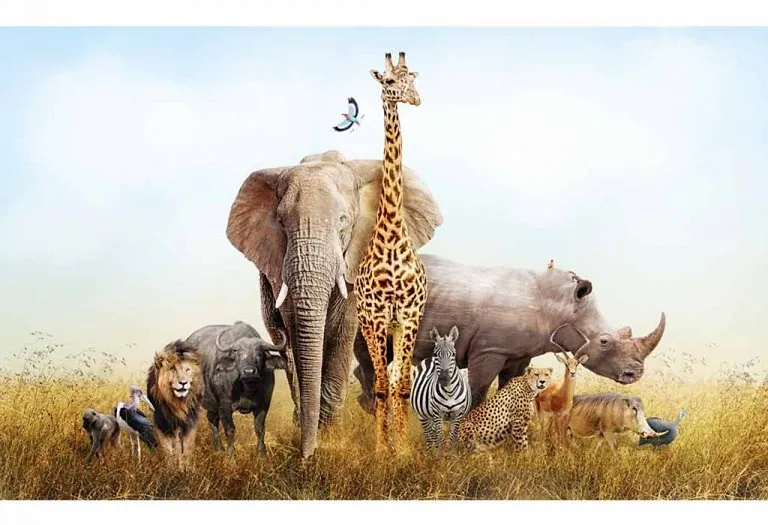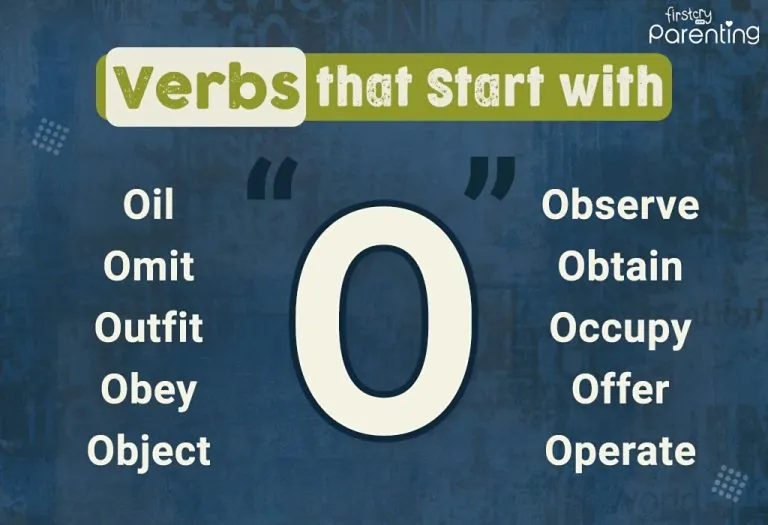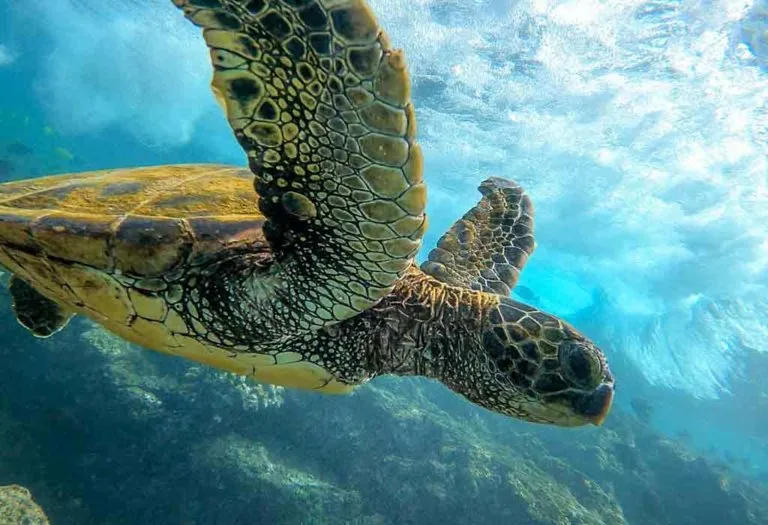Essay On Wild Animals – 10 Lines, Short and Long Essay for Children and Students
- Key Points to Remember When Writing Essay on Wild Animals
- 10 Lines on Wild Animals
- A Paragraph on Wild Animals
- Short Essay on Wild Animals
- Long Essay on Wild Animals in English
- Interesting Facts About Wild Animals for Kids
- What Will Your Child Learn From the Essay on Wild Animals?
- FAQs
- Infographic: 10 Lines on Wild Animals
When children step into the learning phase of their lives, one of the essential tools they come across is essay writing. Crafting a wild animals essay in English is an excellent exercise in improving language skills and a wonderful means of understanding our environment and the myriad creatures that inhabit it. This form of writing acts as a window, opening young minds to the vast wonders of the world around them. Moreover, an essay for school students aids in fostering creativity, improving comprehension, and enhancing critical thinking. So, let’s embark on this journey together, understanding wild animals’ significance and their roles in our ecosystem.
Key Points to Remember When Writing Essay on Wild Animals
Wild animals play an integral role in maintaining the balance of nature and have always fascinated humans with their beauty, strength, and behaviours. As you set out to write an essay on this topic, it’s crucial to approach it with a well-rounded perspective and ensure you cover the essential aspects. Here are some key points to keep in mind:
1. Ecological Importance
- Highlight how wild animals are vital for the ecological balance.
- Discuss their role in pollination, seed dispersal, and soil fertility.
- Mention their importance in the food chain and controlling pest populations.
2. Conservation and Threats
- Elaborate on wild animals’ threats, such as habitat destruction, climate change, and poaching.
- Emphasise the importance of conservation efforts.
- Talk about international agreements and treaties focused on wildlife protection.
3. Cultural and Historical Significance
- Discuss how wild animals have been essential to human myths, legends, and folklore.
- Mention their significance in religious texts and ancient civilisations.
4. Human-Wildlife Conflict
- Describe the reasons behind increasing human-wildlife conflicts.
- Discuss the implications for animals and humans.
- Suggest ways to mitigate these conflicts, like creating buffer zones and educating local communities.
5. Ethical Considerations
- Delve into the morality of hunting, poaching, and using wild animals for entertainment.
- Discuss the concept of animal rights and their welfare in the wild.
6. Importance of Reserves and National Parks
- Highlight how these protected areas help preserve the natural habitats of wild animals.
- Talk about the role of ecotourism in promoting awareness and generating funds for conservation.
7. Personal Experience and Observation
- Share your observations if you’ve ever visited a national park or reserve.
- Talk about the behaviours you noticed or any unique experience that left an impression.
10 Lines on Wild Animals
Wild animals have always been a source of wonder and inspiration for many. Their existence reminds us of the vast and diverse world beyond human civilisation. This essay for lower primary classes introduces young minds to their significance by providing a few lines on wild animals.
- Wild animals live freely in their natural habitats, away from human settlements.
- They come in various shapes, sizes, and colours, each unique and beautiful.
- Animals like lions, elephants, and tigers are often called ‘majestic’ because of their grandeur and power.
- Birds like eagles, parrots, and owls soar in the sky, adding beauty to the world above.
- In the oceans, creatures like dolphins, whales, and sharks rule the underwater kingdom.
- Every forest, desert, mountain, or river has its own wild animals that coexist in harmony.
- Many wild animals play crucial roles in our environment by helping to pollinate plants or control pests.
- Sadly, some animals are in danger because of human actions like deforestation and hunting.
- We must learn about them, respect their space, and protect them.
- Every child should know about wild animals, as understanding and loving them is the first step to conserving them.
A Paragraph on Wild Animals
The realm of wild animals is vast, encompassing the untouched corners of our planet. Their presence whispers tales of evolution, survival, and the intricate web of life. Here is an essay in 100 words that captures the essence of these creatures:
Wild animals’ untamed beauty and raw power are nature’s most incredible treasures. They roam forests, swim in oceans, and soar skies, each species playing its unique role in the ecosystem. Their behaviours and interactions teach us about the delicate balance of nature. From the mighty lions in the African savannah to the colourful fish in coral reefs, these animals are a testament to the planet’s diversity. However, many face threats from habitat loss, climate change, and human interference. Recognising their importance and working towards their conservation ensures not just their survival but also the health of our planet.
Short Essay on Wild Animals
Wild animals have been integral to Earth’s tapestry for aeons, shaping ecosystems and influencing human cultures. Their majesty and beauty capture our imaginations, but understanding their role and significance is paramount. Here’s a short essay to delve deeper into their world:
Wild animals inhabit every conceivable habitat, from the dense jungles of the Amazon to the icy terrains of Antarctica. Whether they be the roaring lions of Africa, the gentle deer of North American forests, or the mysterious deep-sea creatures, each plays a pivotal role in their environment. They contribute to biodiversity, which is essential for a healthy planet. This biodiversity helps in everything from soil enrichment and water purification to aiding in climate control.
However, as human populations grow and expand, these animals face threats like never before. Deforestation, pollution, hunting, and climate change are some of the significant challenges they confront. Many species are now on the edge of extinction, which could have cascading effects on our ecosystems. As guardians of this planet, we must understand these threats and take action. Conservation initiatives, wildlife sanctuaries, and global cooperation can make a difference. By protecting wild animals, we’re not just preserving them for future generations but ensuring our planet’s continued health and balance.
Long Essay on Wild Animals in English
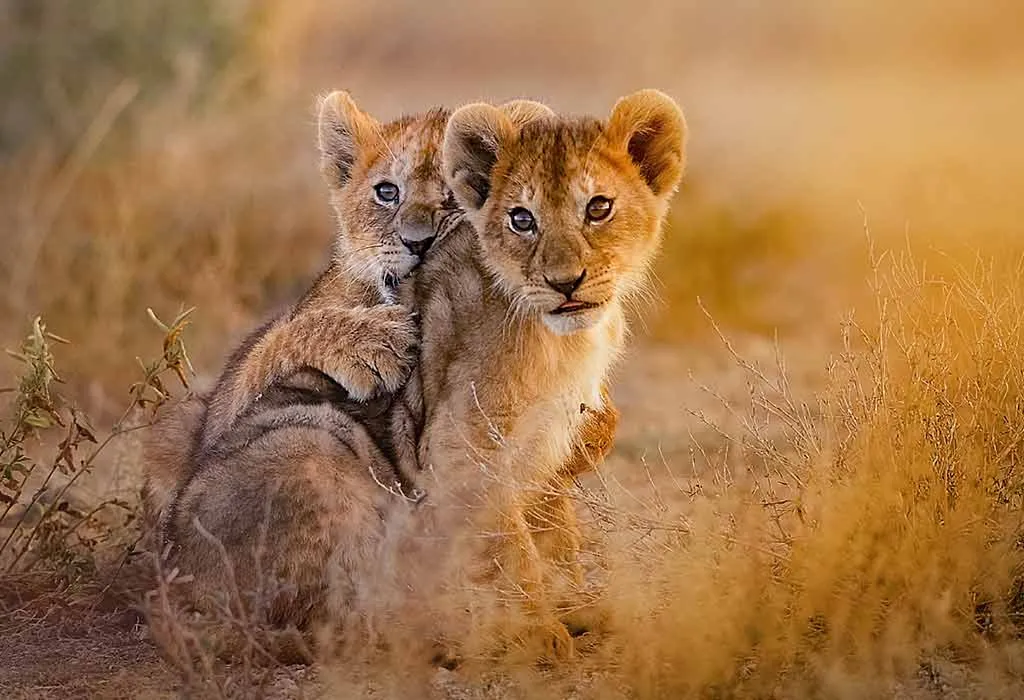
The vast world of wild animals is as intricate as it is intriguing. These animals represent the unbridled essence of nature, showing us a world untouched by human hands and industrial advancements. This essay examines wild animals’ nature, variety, significance, challenges, and efforts to protect them.
What Are Wild Animals?
Wild animals are those species of fauna that have not been domesticated by humans and thrive in natural environments without direct human intervention. They have evolved over millions of years, adapting to their surroundings and forming complex ecosystems. Unlike domesticated animals, which humans have selectively bred for specific traits, wild animals maintain their natural behaviours and instincts. From the silent owl hunting in the night to the packs of wolves roaming vast terrains, they represent the raw, untamed spirit of the Earth.
Types of Wild Animals
The diversity of wild animals is vast, and they can be broadly categorised based on their habitat and characteristics:
- Mammals: Warm-blooded animals with hair or fur, e.g., lions, elephants, and kangaroos.
- Birds: Feathered creatures capable of flight, e.g., eagles, penguins, and sparrows.
- Reptiles: Cold-blooded animals with scales, e.g., snakes, turtles, and lizards.
- Amphibians: Animals that can live on land and in water, e.g., frogs, salamanders, and newts.
- Fish: Aquatic creatures that live in freshwater or saltwater environments, e.g., sharks, salmon, and clownfish.
- Invertebrates: Animals without a backbone, e.g., spiders, butterflies, and octopuses.
Importance of Wild Animals
Wild animals play a paramount role in maintaining ecological balance. Their existence impacts the environment in several ways:
- Ecosystem Balance: They play roles as predators and prey, maintaining the balance of populations.
- Pollination: Birds, bats, and insects help pollinate plants, ensuring fruit and seed production.
- Soil Fertility: Animals like earthworms improve soil quality by aerating it.
- Cultural Impact: Wild animals have been symbols in human culture, mythology, and religion.
Major Causes of Decreasing the Number of Wild Animals
The alarming rate at which the number of wild animals is decreasing can be attributed to various factors:
- Habitat Destruction: Urbanisation and deforestation have led to a loss of habitat for many species.
- Poaching: Illegal hunting for skins, tusks, and other animal parts is a significant threat.
- Climate Change: Changing weather patterns and rising temperatures affect animal habitats and food sources.
- Pollution: Air, water, and land pollution harms animal health.
- Human-Wildlife Conflict: As human settlements expand, conflicts arise, leading to fatalities.
Steps Taken for Protecting Wild Animals
Protecting wild animals has become a global priority, and numerous steps have been taken:
- Establishment of Protected Areas: National parks, wildlife sanctuaries, and biosphere reserves are created to offer a safe habitat.
- Legal Protections: International treaties, such as the CITES (Convention on International Trade in Endangered Species), regulate wildlife trade.
- Conservation Initiatives: Organisations like WWF and IUCN work towards wildlife protection.
- Community Engagement: Local communities are involved in conservation efforts, ensuring sustainable coexistence.
- Research & Rehabilitation: Injured and orphaned animals are rehabilitated, and scientific research helps us better understand their needs.
Interesting Facts About Wild Animals for Kids
Wild animals are fascinating, and their behaviours and features hide many secrets and wonders. Let’s explore some interesting facts about these incredible creatures kids will love to know!
- Elephant Memory: Elephants are known to have excellent memories (1). They can remember friends and places from years ago and even recognise humans they met long ago!
- Chameleons’ Magic: Chameleons can change their skin colour based on their mood, temperature, or surroundings (4). They have a built-in mood ring!
- Bird’s Eye View: An eagle’s eyesight is so sharp that it can spot prey from almost two miles away (2). Imagine being able to see your favourite toy from such a distance!
- Giraffe’s Long Neck: Despite having such a long neck, giraffes have the same number of neck vertebrae as humans, which is seven (3). Their neck vertebrae are just much bigger than ours.
- Dolphin Communication: Dolphins are highly intelligent and can communicate with each other using a complex system of clicks, whistles, and body movements. Some dolphins even have specific whistles that act like names (5)!
- Cheetah Speed: Cheetahs are the fastest land animals, capable of reaching speeds up to 60-70 miles per hour in short bursts (6). They can run faster than a car on a city street!
What Will Your Child Learn From the Essay on Wild Animals?
Through the essay on wild animals, your child will gain insights into the diverse world of wildlife and understand its importance in maintaining ecological balance. Additionally, they will become aware of these creatures’ challenges, fostering empathy for their conservation.
FAQs
1. Where do wild animals live?
Wild animals inhabit various natural environments, including forests, deserts, oceans, mountains, and grasslands.
2. Which wild animal is the fastest among all?
The cheetah is the fastest wild animal on land, reaching speeds up to 60-70 miles per hour.
3. Which wild animal is tallest?
The giraffe is the tallest wild animal, with some adults reaching heights of over 18 feet.
4. Why do people hunt wild animals?
People hunt wild animals for various reasons, including for their meat, skin, tusks, medicinal value, or sometimes for sport and trophy collection.
The diverse and magnificent world of wild animals is a testament to nature’s brilliance and complexity. As we strive to coexist, it is vital to understand, respect, and conserve these creatures, ensuring a balanced and thriving planet for future generations.
Infographic: 10 Lines on Wild Animals
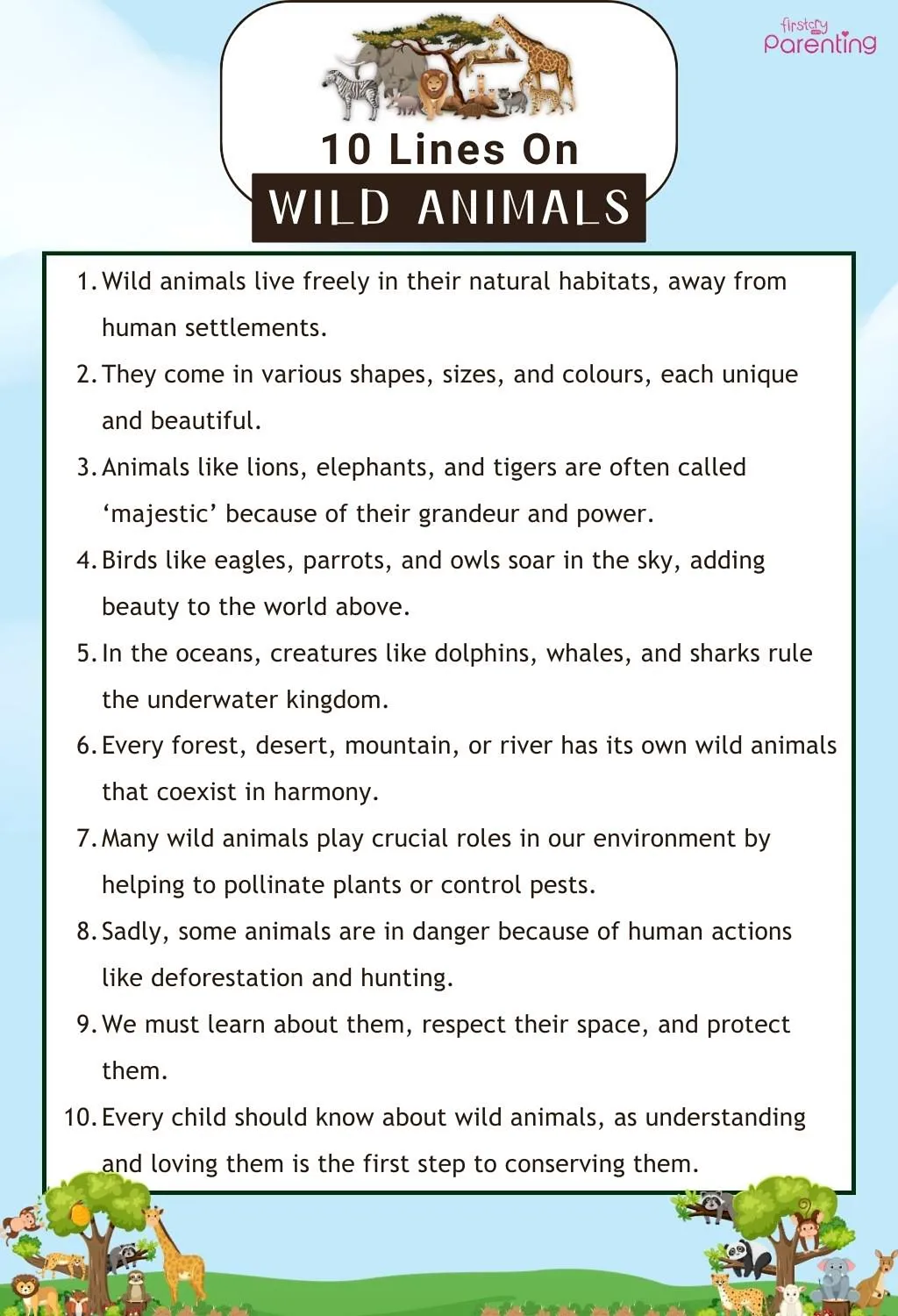
References/Resources:
1. Do Elephants Ever Forget?; Wonderopolis; https://www.wonderopolis.org/wonder/do-elephants-ever-forget#
2. Eagles Eyes – The eyes of an eagle are exceptionally sharp.; Cascades Raptor Center; https://cascadesraptorcenter.org/wp-content/uploads/2020/01/Eagles-Eyes.pdf
3. Why do giraffe have such a long neck?; Giraffe Conservation Foundation; https://giraffeconservation.org/facts/why-do-giraffe-have-such-a-long-neck/
4. Why Do Chameleons Change Their Colors?; Wonderopolis; https://www.wonderopolis.org/wonder/Why-Do-Chameleons-Change-Their-Colors
5. Herzing. D; Clicks, whistles and pulses: Passive and active signal use in dolphin communication (Acta Astronautica); ScienceDirect; https://www.sciencedirect.com/science/article/abs/pii/S009457651400246X; December 2014
6. Cheetah; National Geographic Kids; https://kids.nationalgeographic.com/animals/mammals/facts/cheetah
Also Read:
Amazing Animals with Stripes
Smartest Animals in the World You Need to Know
Interesting Aquatic Animals Information for Kids
Spring Animals that Kids Should Know About
Teach Your Kids About Zoo Animals With Pictures
Was This Article Helpful?
Parenting is a huge responsibility, for you as a caregiver, but also for us as a parenting content platform. We understand that and take our responsibility of creating credible content seriously. FirstCry Parenting articles are written and published only after extensive research using factually sound references to deliver quality content that is accurate, validated by experts, and completely reliable. To understand how we go about creating content that is credible, read our editorial policy here.






